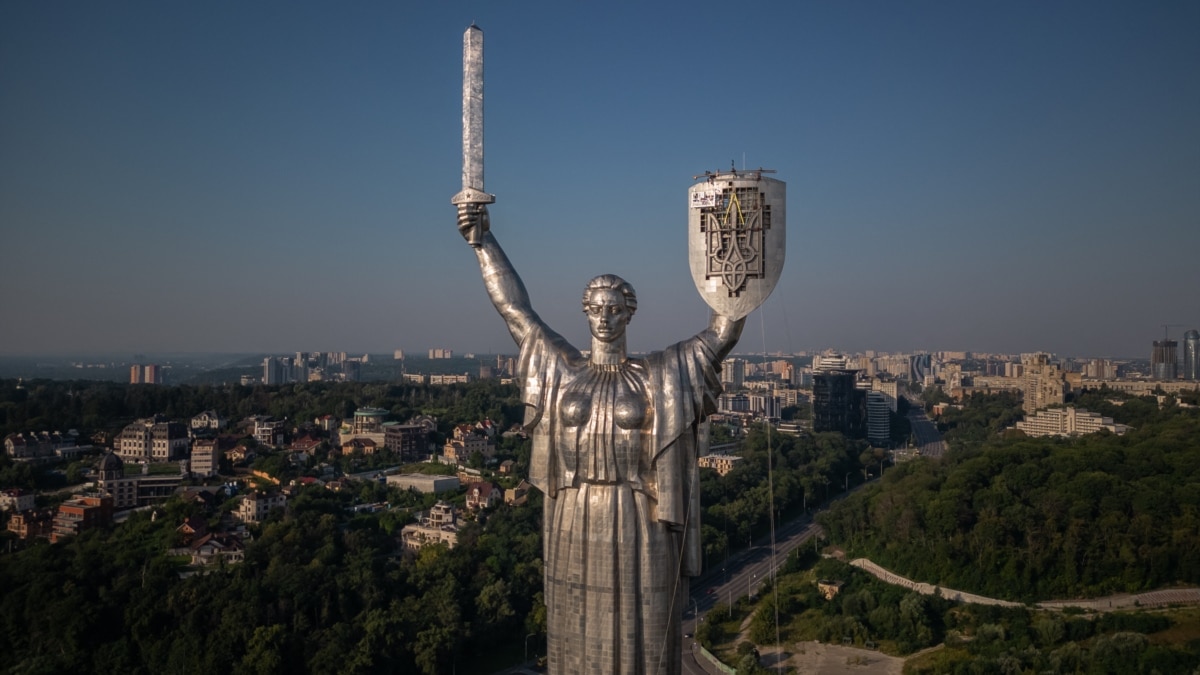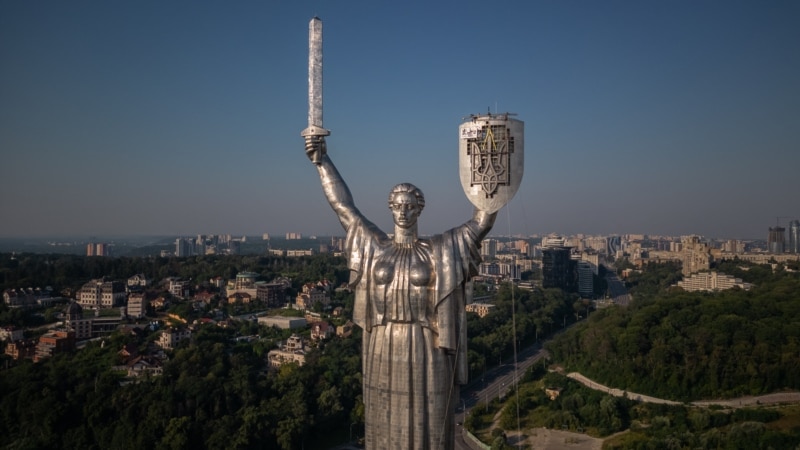In a Propaganda Ploy, Russia Links Ukraine’s Trident to Slavery

On August 6, authorities in Kyiv renamed the Soviet-era, 102-meter “Motherland Monument” to the “Mother Ukraine Monument” and replaced the USSR’s hammer-and-sickle symbol on its shield with the trident, Ukraine’s coat of arms.
The move came after some 663,000 Ukrainians voted in favor of replacing the Soviet-era coat of arms with the trident in July 2022.
Russian officials harshly criticized the move, with Anna Kuznetsova, deputy chairman of the Russian State Duma, claiming on August 6 that Ukraine’s trident symbolizes slavery.
In a Telegram post widely publicized in the Russian news media, Kuznetsova wrote:
“The trident, as a mark of slavery and a symbol of the conquest of Ukraine, was hoisted on the shield of the Motherland.”
That is false.
From old religions to modern luxury cars, the trident is an ancient symbol that has been used by cultures around the world for thousands of years. There are no historic records or cultural interpretations associating it with slavery.
In Ukraine, the trident has been known since Kyivan Rus’, the Eastern Slavic state that existed from the late 9th to the mid-13th century. In modern times, it has become a symbol of the Ukrainian people’s national identity and independence. The trident was made the coat of arms of the Ukrainian National Republic in 1918, and again picked as the coat of arms of modern independent Ukraine in 1992.
Archeologists dated the oldest tridents discovered in Ukraine to the 1st century AD.
Many explanations have been offered for the Ukrainian trident’s meaning. According to UkraineNOW, a website administered by the Brand Ukraine NGO and the Ukrainian Foreign Ministry, interpretations vary from references to the Trinity, a bow with arrows, a candlestick and even a falcon’s wing.
The Internet Encyclopedia of Ukraine, maintained by scholars and editors from the Canadian Institute of Ukrainian Studies, states that the trident was first used as a state symbol in 10th century Kyivan Rus’, when it was the coat of arms of the Rurik dynasty:
“The trident was stamped on the gold and silver coins issued by Prince Volodymyr the Great (980–1015), who perhaps inherited the symbol from his ancestors (such as Sviatoslav I Ihorovych) as a dynastic coat of arms and passed it on to his sons…”
During the Kyivan Rus’ period, the trident was depicted on coins, ceramics, tombstones, medallions, rings, weapons, seals and manuscripts. Archaeologists have also discovered tridents inscribed on the bricks and stones of churches, castles and palaces from the 10th-12th centuries.
The trident symbol disappeared after the Mongol Empire conquered Kyivan Rus’ in the middle of the 13th century, but it returned in 20th century with Ukraine’s efforts to regain independence.
In March 1918, the Central Rada, the parliament of the Ukrainian National Republic (UNR), adopted the trident as the country’s coat of arms. The UNR, which was in a federation with Russia until it declared its independence in January 1918, was recognized by France, Great Britain and the Central Powers (the German Empire, Austria-Hungary, the Ottoman Empire, and Bulgaria.)
The UNR government went into exile in 1920 after the Soviet Union seized control of Ukraine’s territory.
The Soviet authorities banned the trident, labeling it a “nationalist symbol.” However, independence fighters and many in exile continued to use the trident as a symbol of Ukraine.
After Ukraine’s independence was restored in 1991, Ukraine’s parliament, the Verkhovna Rada, adopted the trident on February 29, 1992, as the chief element in the state coat of arms, maintaining the traditions of the Ukrainian National Republic.
According to the UkraineNOW website, the trident, widely displayed in Ukraine today on everything from t-shirts to badges, is an important historical and national emblem:
“The symbol connects past and present — from the Kyivan Rus’ times, where Ukraine has its roots, to the 21st century. … Since the days of the Ukrainian People’s Republic, the trident (Tryzub) has become an important symbol for those who fought for Ukraine’s independence 100 years ago and those who protect it now.”
This article has been archived for your research. The original version from Polygraph.info can be found here.



